Solar eclipse of December 2, 1956
A partial solar eclipse occurred on December 2, 1956. A solar eclipse occurs when the Moon passes between Earth and the Sun, thereby totally or partly obscuring the image of the Sun for a viewer on Earth. A partial solar eclipse occurs in the polar regions of the Earth when the center of the Moon's shadow misses the Earth.
| Solar eclipse of December 2, 1956 | |
|---|---|
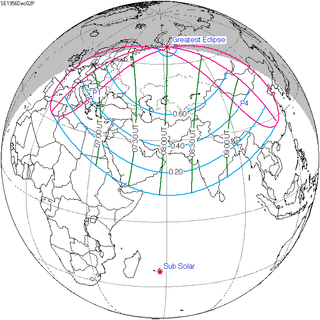 Map | |
| Type of eclipse | |
| Nature | Partial |
| Gamma | 1.0923 |
| Magnitude | 0.8047 |
| Maximum eclipse | |
| Coordinates | 67.9°N 64.6°E |
| Times (UTC) | |
| Greatest eclipse | 8:00:35 |
| References | |
| Saros | 151 (11 of 72) |
| Catalog # (SE5000) | 9413 |
Related eclipses
Solar eclipses of 1953–1956
This eclipse is a member of a semester series. An eclipse in a semester series of solar eclipses repeats approximately every 177 days and 4 hours (a semester) at alternating nodes of the Moon's orbit.[1]
Note: Partial solar eclipse of February 14, 1953 and August 9, 1953 belong to the last lunar year set.
| Solar eclipse series sets from 1953–1956 | ||||
|---|---|---|---|---|
| Descending node | Ascending node | |||
| Saros | Map | Saros | Map | |
| 116 | 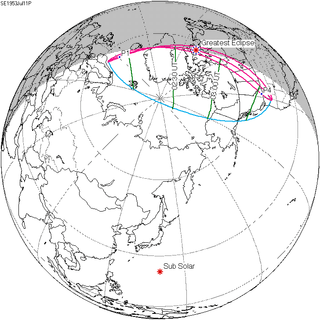 July 11, 1953 Partial |
121 |  January 5, 1954 Annular | |
| 126 | 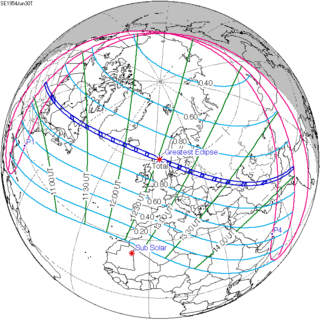 June 30, 1954 Total |
131 | 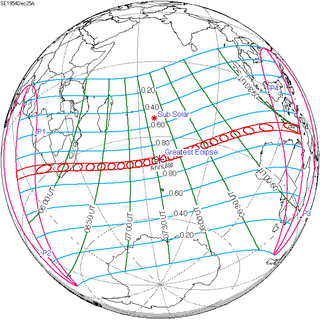 December 25, 1954 Annular | |
| 136 |  June 20, 1955 Total |
141 | 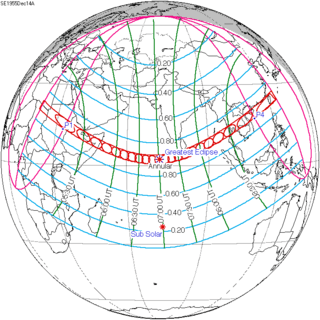 December 14, 1955 Annular | |
| 146 | 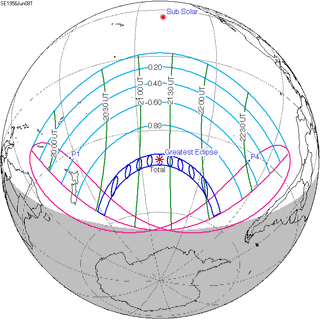 June 8, 1956 Total |
151 |  December 2, 1956 Partial | |
gollark: Telling people that they should support some sort of equality thing because, in a thought experiment, they would be randomly assigned whatever attributes, does not seem like it would work.
gollark: Given that people already exist who are *not* in some randomly assigned position, I don't see how you can use the veil of ignorance thing for much beyond just evaluating some details about how good a society is.
gollark: 🐝 ❕
gollark: Bee you.
gollark: I disagree somewhat with your disagreement. The memes you see have been filtered through a lot of people and websites before reaching you and ones which weren't sufficiently memey weeded out. Popular memes provide some insight into what people like.
References
- Earth visibility chart and eclipse statistics Eclipse Predictions by Fred Espenak, NASA/GSFC
- van Gent, R.H. "Solar- and Lunar-Eclipse Predictions from Antiquity to the Present". A Catalogue of Eclipse Cycles. Utrecht University. Retrieved 6 October 2018.
This article is issued from Wikipedia. The text is licensed under Creative Commons - Attribution - Sharealike. Additional terms may apply for the media files.
.jpg)
